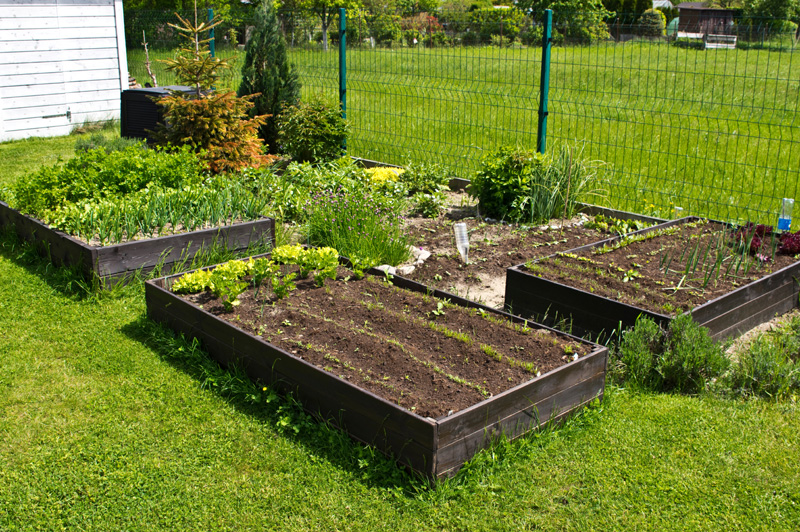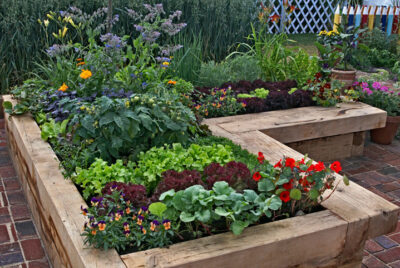Choosing the Best Location for a Raised Garden Bed
Finding the best location for raised garden bed can feel a bit like being a detective in a garden-themed mystery. It’s about piecing together clues from the environment to find the ideal setting where your plants will thrive. Let’s dig into how to select the best location to maximize your garden’s potential.
Understanding Your Garden’s Sunlight
Sunlight is the lifeblood of your garden. Most vegetables and flowers crave sunlight and need a good amount to flourish. The first step in our garden location investigation is to figure out how much sun different parts of your yard receive.
A spot that gets at least six to eight hours of direct sunlight per day is ideal. Don’t just guess—take the time to observe how sunlight falls over your yard throughout the day. Is there an area that basks in the morning light but is shaded in the afternoon? Knowing these patterns will guide you to the perfect spot.
Consider the Soil and Ground Conditions
While the beauty of raised garden beds is that you can control the soil within them, the ground on which they sit can still impact their health. Avoid areas where water pools after rain; standing water can lead to rot and mold, not what you want near your plants! If you’re setting up over grass or on a slope, you’ll need to take extra measures to stabilize your bed and ensure good drainage.
Accessibility Matters for the Best Location for Raised Garden Bed
How easy is it to get to your garden bed? You’re more likely to tend to your plants regularly if your garden is readily accessible. Make sure your site is not only easy to reach but also near a water source. Lugging a watering can or a hose across the entire yard can quickly become a gardener’s nightmare.
Wind Exposure – Friend or Foe?
Wind can be a blessing on a hot summer day but a curse for your delicate plants. An area too exposed to strong winds might hinder plant growth or dry out the soil too rapidly. Consider natural windbreaks like fences or buildings, or create your own with additional plantings that can shield your raised beds.
Nearby Trees and Structures
Trees and large structures can affect your garden in a few ways. Shadows cast can limit sunlight exposure, and roots from large trees can compete with your garden for nutrients and water. Structures, meanwhile, can either protect your garden from elements or lead to problems like water runoff. Choose a spot that minimizes conflict with these features.
Maximizing Your Garden’s Microclimate
Every yard has microclimates—small areas where conditions differ from the surrounding area. Maybe it’s a wall that radiates heat and could benefit heat-loving tomatoes, or a shaded corner where cool-weather lettuce could thrive. Harnessing these microclimates can turn an average garden into a bountiful paradise.
Think About the Aesthetics
Your raised garden bed doesn’t just have to be functional; it can also enhance the beauty of your outdoor space. Place your garden where it can be viewed and enjoyed, perhaps from a window or near a patio. Let it complement your home’s overall landscape design.
Future Expansion
Gardening is addictive, and chances are, you’ll want to expand. Think about the future growth of your garden when choosing your initial location. Ensure there’s room to add more beds without disrupting your current setup.
Summary
Choosing the right location for your raised garden bed is a foundational step in becoming a successful gardener. It’s about more than just picking a spot; it’s about considering the interplay of sunlight, water, accessibility, and protection to create an optimal environment for your plants.
Here’s an interesting video showing how to choose the best location for your raised garden bed.
FAQs About Choosing the Best Location for a Raised Garden Bed
- What is the minimum amount of sunlight needed for a raised garden bed?
Most garden plants need at least six to eight hours of direct sunlight to thrive, though some shade-loving plants may require less. - Can I place a raised garden bed on a concrete surface?
Yes, you can place raised beds on concrete. Just make sure you have adequate drainage in the bed to prevent waterlogging. - How do I protect my garden from strong winds?
Position your garden near natural windbreaks like buildings or fences, or consider planting shrubs and trees that can act as wind barriers. - What should I do if my yard is mostly shaded?
Choose plants that can grow in partial shade or consider artificial lighting solutions if the shade is too dense for sunlight-loving plants. - Can I move my raised garden bed once it’s set up?
While it’s possible to move a raised bed, it can be a labor-intensive process. It’s best to spend adequate time choosing the right spot from the start to avoid the need to move it later.
By following these guidelines and considering these aspects, you can select the best spot for your raised garden bed, ensuring your gardening efforts are fruitful and your plants vibrant. Happy gardening!


